Rhizoctonia solani Learn more about Rhizoctonia solani
-
Introduction to the manifestations and control measures of quenching disease and blight disease of herbaceous flowers

Sudden fall and blight are the main diseases in the seedling stage of herbaceous flowers. Cockscomb flower, red string, marigold, flat-top impatiens and so on are very easy to be infected with this disease. The two pathogens are different, the main pathogen of quenching disease is Rhizoctonia solani, and the main pathogen of Rhizoctonia solani is Rhizoctonia solani, but their control methods are similar.
2018-08-26 -
Control of Rhizoctonia solani at Seedling Stage of Dangshen

The disease site is mostly at the stem base of the dry and wet junction below the epidermis. At the beginning of the yellow brown spot depression, the spot expanded around the stem and gradually immersed in the stem rot and die. Once infected quickly, die in pieces. Control methods: choose sandy soil with convenient drainage, good ventilation, and increase phosphorus and potassium fertilizer. 50% carbendazim wettable powder or 65% manineb wettable powder is selected for seed dressing according to 0.2%-0.3% of seed dosage; 50% carbendazim wettable powder or 65% manineb wettable powder can also be used.
2019-01-15 -
Rhizoctonia solani of potato

(pathogen name) RhizoefoniasolaniK ü hn (host crop) Solanaceae, Leguminosae, Gramineae and other crops have a wide range of hosts. (disease diagnosis) mainly harms buds, stem bases and tubers. Young buds infected with disease, ununearthed cause rot, the formation of bud rot, resulting in lack of seedlings; unearthed infected, the lower leaves began to yellowing, the base of the stem produced brown sunken spots, the size of 1 cm to 6 cm. The lesion and its surroundings are often covered with purple mycelium; sometimes there are different sizes at the base of the stem and on the tuber.
2019-01-16 -
The difference between sudden collapse disease and blight disease

There are many differences between sudden collapse disease and blight disease, including different pathogens, different types of damage, different time of onset, different symptoms, and different methods of prevention and treatment. The disease often occurs after the seedlings are unearthed and before the true leaves are unfolded. The suitable ground humidity for the disease is
2020-11-09 Snap disease and blight distinction cataplexy -
How to control cotton blight
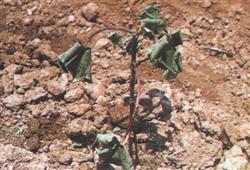
Cotton Rhizoctonia solani, also known as root rot, black root disease, the pathogen is Rhizoctonia solani. Infection of pathogen before seed germination can cause rotten seed, and infection after germination to pre-unearthed can cause rotten bud. After the cotton seedlings were unearthed, the yellow-brown disease spot appeared at the base near the soil surface at the initial stage, and the disease spot gradually expanded and surrounded the whole base. Senior farmers.
2018-09-12 -
How to prevent and control the diseases of herbaceous flowers at seedling stage and the methods of flower maintenance

How to Control Seedling Diseases of herbaceous Flowers
2019-06-17 -
The killer of scientifically raising orchids rotted and dried up.

Carry forward the national orchid culture, spread the orchid knowledge orchid, your good teacher on the orchid road so-called soil infectious disease refers to the germs are mostly transmitted from the matrix materials, this kind of disease has one of the biggest characteristics, they for orchids.
2018-05-14 -
It is important to protect seedlings in order to achieve high yield of atractylodes macrocephala
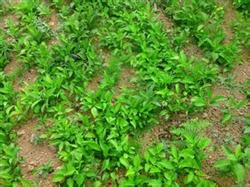
As a kind of traditional Chinese medicine with high economic value, atractylodes macrocephala is planted by more and more people. However, due to the uneven level of planting and management, the economic benefits of growers vary greatly. Especially in the early stage, the growth habits and pest control of atractylodes macrocephala are not accurate, often causing a large number of dead seedlings in the early stage of atractylodes macrocephala, and...
2018-07-18 -
Prevention and control of blight

Prevention and control of blight
2018-08-09 -
Safe use technology of pesticides in the production of high-oil soybean
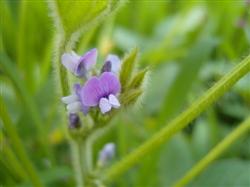
Although soybeans can fix free nitrogen in the atmosphere by nodules, this accounts for only 30% to 50% of their needs, and the rest needs soil supply. Therefore, topdressing nitrogen fertilizer to soybean can strengthen stalk and branch, expand leaf area, enhance photosynthesis and improve stress resistance. Plots with poor soil fertility should be chased at the seedling stage.
2018-07-24 -
Orchid root rot

Orchid root rot
2018-05-03 -
Symptoms and control of bracken blight

Bracken (Pteridium aquilinum var.latiusculum), also known as fist vegetables, cat claws and leading vegetables, is born in sunny plots in shallow mountainous areas and is found in most parts of China, mostly distributed in sparse coniferous and broad-leaved mixed forests. Its edible part is undeveloped young leaf buds, treated.
2020-11-08 Bracken Rhizoctonia solanacearum disease symptoms and control bracken Pteridium -
Abnormal temperature and precaution against Rice Seedling Diseases

Seedling disease is the general name of a variety of physiological diseases and infectious diseases during the period of rice seedling cultivation, also known as seedling rot. Physiological rotten seedlings refer to the symptoms of rotten seeds, rotten buds, black roots, green wilt and yellow withered seedlings caused by adverse environmental conditions, while infectious rotten seedlings refer to the symptoms of dead seedlings caused by cotton rot and standing blight. The northern rice area is often attacked by low temperature and cold spell weather during the seedling raising period, and the annual incidence of rotten rice seedlings is 10% to 23%. Symptom characteristics-nbsp1, physiological rotten seedlings: 1. Rotten seed, which means that the seed has not been released.
2019-01-16 -
Control techniques of Rice Vertical Blight

Control techniques of Rice Vertical Blight
2018-07-01 -
Control of diseases and insect pests in broccoli

Broccoli is a 2012 herb, originated in the eastern Mediterranean coastal area, a small amount of cultivation in China, mainly for Western food use. Broccoli is rich in nutrients, including protein, sugar, fat, vitamins and carotene, ranking first among similar vegetables.
2020-11-08 West orchid pest control western for one or two years -
Current occurrence and Control of Diseases and pests in Rice Seedling Field

Aphids, thrips and blight mainly occur in rice seedling stage, which endanger the growth of rice seedlings. Rice thrips and nymphs are often harmful to the ears, tongues and heart leaves of rice thrips, and yellow and white spots appear in the damaged parts, followed by flower and white spots on the leaves, and the damaged seedlings return slowly to green and shrink, as if they were "sitting". Rhizoctonia solani mostly occurs in wet (semi-arid) seedling fields and dry seedling fields, causing dead seedlings. Due to the unstable temperature in the first and middle of April, it is easy to cause aphids, thrips and blight, affecting the whole seedling, full seedling and strong seedling. Ask the agricultural technology centers of township offices to strengthen water.
2019-01-16 -
What to do with the growth of glabrous flowers? pest control of glabrous cotyledons / 2 insect pests 2 diseases
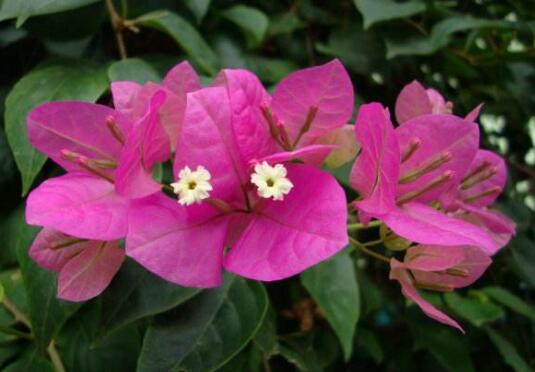
In the process of cultivating bare-leaf cotyledons, the last thing we want to encounter is the problems of diseases and insect pests, which do great harm to the plant, which will not only affect its ornamental, but also lead to the phenomenon of plant death. What about the bare-leaf flower worms?
2018-12-09 -
Diseases of guava: control of standing blight of common diseases of guava
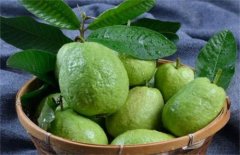
Guava has a blight disease how to do, how to prevent and control, what the disease is like, let's take a look. Symptoms: after different guava varieties were harmed by Rhizoctonia solani, except for the strength of disease resistance, the symptoms were also slightly different. After general infection with blight disease
2019-01-19 Guava disease common standing blight control guava -
Occurrence and control of wheat sheath blight in spring
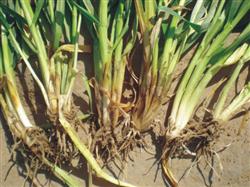
Wheat sheath blight is a kind of fungal disease which is mainly transmitted by soil. With the improvement of the level of yield, the harm of the popularization of high-yield varieties and the management of wheat fields with heavy water and fertilizer is becoming more and more serious. Rhizoctonia solani can infect not only wheat, but also corn, rice, millet, sorghum and so on.
2018-09-10 -
The latest course of techniques and methods for the control of rice blight

Rice vertical blight is one of the most important diseases of dry-raised rice seedlings. The main causes of the disease are low temperature, excessive temperature difference, alkaline soil, insufficient light, weak seedling, excessive seed quantity and so on. The main symptoms in the field are that the seedlings wither after emergence and are easy to pull out.
2020-11-10 The latest rice blight disease control technology methods tutorials
